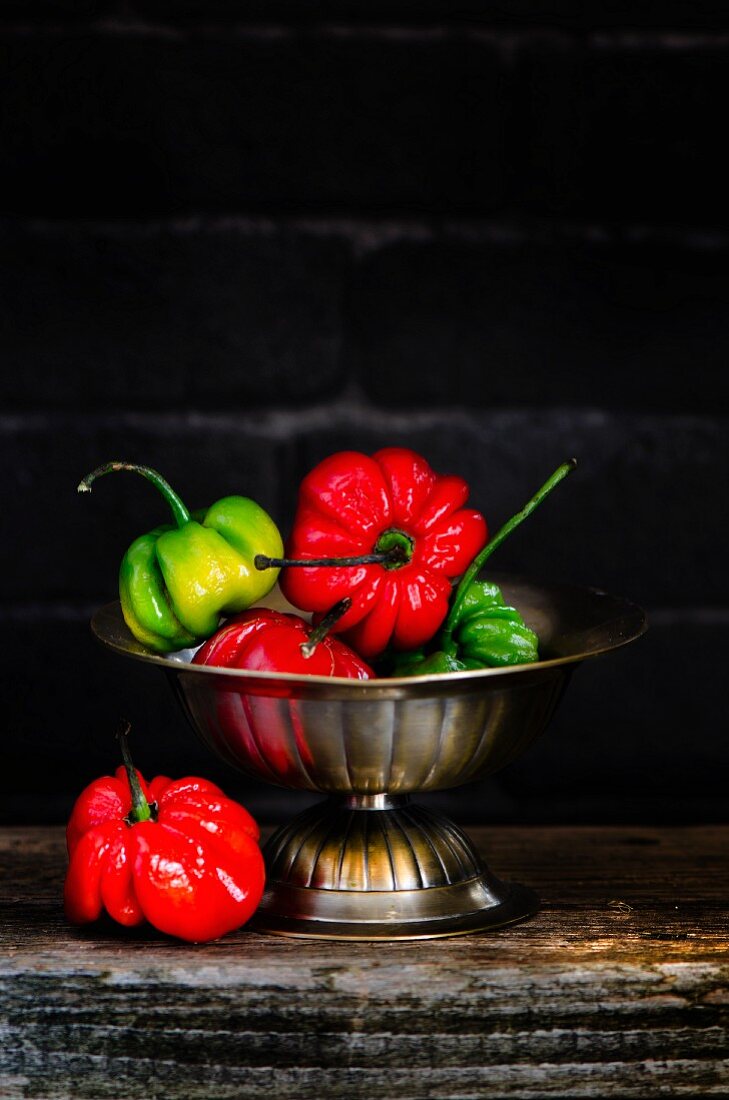Scotch bonnet peppers are known for their intense heat and unique flavour. These peppers can reach a heat level of 100,000 to 350,000 Scoville Heat Units, making them one of the hottest peppers in the world. They are a staple in Caribbean cooking, often adding a spicy kick to dishes such as jerk chicken and sauces.
Beyond their heat, scotch bonnets also bring a fruity, floral note that can elevate recipes. Many people find that the right amount can transform a dish by adding depth and character. For those who love cooking with spice, understanding how to use these peppers can enhance their culinary skills and impress their guests.
If someone is looking to explore new flavours or simply enjoys a challenge in the kitchen, scotch bonnet peppers could be the way to go.
What Are Scotch Bonnet Peppers?
Scotch bonnet peppers are a popular type of chilli known for their heat and unique flavour. They play a key role in Caribbean cooking and are often used in sauces, marinades, and traditional dishes.
Historical Background
Scotch bonnet peppers are native to the Caribbean. They are closely associated with Jamaican cuisine. The name comes from their shape, which looks similar to a Scottish bonnet.
These peppers have been cultivated for centuries. They are an important part of Caribbean culture and cuisine. Scotch bonnets are often used in jerk seasoning, a famous spice blend.
Their heat level varies but can be quite intense, often measuring between 100,000 to 350,000 Scoville Heat Units (SHU). This makes them significantly hotter than jalapeños.
Cultivation and Varieties
Scotch bonnet peppers thrive in warm climates. They require well-drained soil and plenty of sunlight. They are typically grown from seeds, which can be planted in spring for a summer harvest.
There are several varieties of Scotch bonnets, each with its own flavour profile. These include yellow, red, and orange versions.
The red Scotch bonnet is the most common. Yellow Scotch bonnets are often used for milder recipes.
Growing these peppers can be rewarding. They not only add heat but also flavour to dishes. Home gardeners can enjoy their unique taste by planting them in pots or gardens.
Culinary Uses
Scotch bonnet peppers add a unique heat and flavour to many dishes. They are especially popular in Caribbean cuisine but can enhance meals worldwide.
Popular Dishes
Scotch bonnet peppers are vital in several traditional dishes. Jerk chicken is one popular option, where the peppers provide a spicy marinade. They are also a key ingredient in pepper sauce, giving it a distinctive kick.
In curried dishes, they add warmth to the mix, complementing meats and vegetables. Soups and stews often benefit from the pepper’s flavour, making them heartier and more vibrant.
For those who like a spicy kick in their salsas, adding chopped scotch bonnet can turn a simple dip into something exciting.
Cooking Tips
When using scotch bonnet peppers, it’s important to handle them with care. Always wear gloves to avoid skin irritation.
Start with a small amount when adding them to dishes. The heat level can vary, and it’s easier to add more than to cool it down.
For milder flavours, remove the seeds and membranes, as they hold most of the heat.
Roasting the peppers before using them can enhance their sweetness and add depth to recipes.
Health Benefits and Risks
Scotch bonnet peppers offer several health benefits but also come with potential risks. Understanding these points helps in making informed choices about their use in diets.
Nutritional Value
Scotch bonnet peppers are rich in vitamins and minerals. They contain Vitamin C, which is great for the immune system, helping the body fight off illness. A single pepper can provide a significant portion of the daily Vitamin C needs.
These peppers also have Vitamin A, important for eye health and skin. They supply some B vitamins, like folate, which supports cell function. With a low-calorie count, they can enhance meals without adding extra weight.
The main active ingredient is capsaicin. This compound may help with pain relief and has anti-inflammatory properties. Including scotch bonnet peppers in meals can boost nutrition and flavour.
Heat Considerations
Scotch bonnet peppers are known for their extreme heat. They rate between 100,000 and 350,000 Scoville Heat Units. This makes them one of the hottest peppers available.
The heat might be too intense for some individuals, leading to discomfort. It can cause a burning sensation in the mouth and stomach. Those with sensitive stomachs should approach these peppers carefully.
People can build a tolerance over time, but that takes practice. Cooking or pairing them with dairy can help reduce their heat. It’s smart to start with small amounts to gauge personal tolerance before adding more to dishes.
Growing Your Scotch Bonnets
Growing Scotch bonnet peppers can be a fun and rewarding experience. They thrive in warm climates, so it’s best to start them indoors if the weather is cooler.
Here are some easy steps to grow them:
-
Seeds: Start with good-quality seeds. Soak them in water for 24 hours to help with germination.
-
Containers: Use small pots filled with seed-starting mix. The soil should be light and well-draining.
-
Sunlight: Place the pots in a sunny spot. They need at least 6-8 hours of sunlight each day.
-
Watering: Keep the soil moist but not soggy. Overwatering can lead to root rot.
-
Transplanting: When the seedlings are about 5-10 cm tall, transplant them to larger containers or outside if the temperature is consistently warm.
Temperature: Scotch bonnets like warmth. Ideal temperatures are between 21-29°C (70-85°F).
Fertiliser: Use a balanced fertiliser every few weeks once they start growing.
Pests: Watch out for pests like aphids. Use insecticidal soap if needed.


